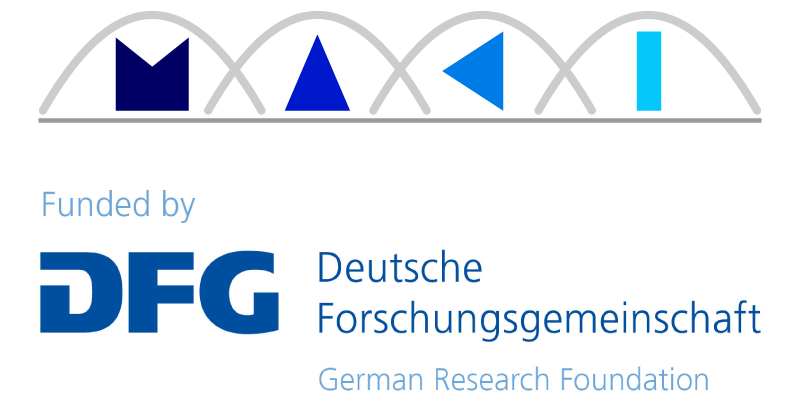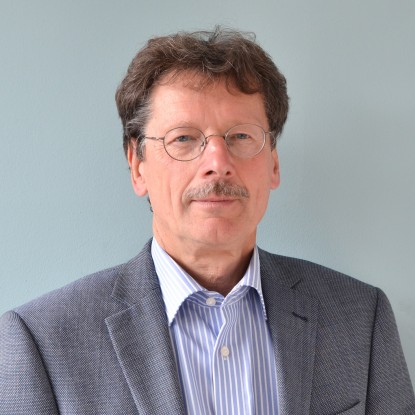Transition Support with SDN and In-Network Processing
Subproject B2 investigates the execution of communication systems and multi-mechanisms in an end-to-end perspective under consideration of In-Network Processing (INP). The continuous mapping of processing elements to network components considers coexistent multi-mechanisms and supports transitions proactively. For this, an appropriate description of the demands and the available resources is required, which takes both the heterogeneity as well as differences due to quantitative and functional properties into account.
B2 supports the execution of MAKI communication systems that coordinate multi-mechanisms and application components in a holistic manner. This corresponds to the fourth step of the known MAPE (monitoring, analysis, planning, execution) cycle. Subproject B supports this control loop in an integrated manner by including all steps as required.
Back in phase I, subproject B2 covered step P of the MAPE cycle for the purpose of controlling multi-mechanism transitions. This was carried out by the group of Prof. Weihe; directly connected to this was the work done by the group of Prof. Mühlhäuser who investigated the execution step of the MAPE cycle, including the necessary runtime environments. The former work resulted in system models for multiple multi-mechanisms that are suitable for discrete optimizations. The system allows to model transition costs and mutual dependencies. Based on the graph theory min-cost-flow problem, a generic model was developed which allows to embed optimization algorithms for coordinating transitions. Beside the conceptual contributions, algorithms for specific MAKI-related scenarios were developed.
Regarding step E, the research was focused on concepts and methods enabling coordinated transitions in multiple multi-mechanisms. It was an important goal to connect MAKI concepts to the huge amount of available communication protocols and distributed applications. This was achieved by using a standardized virtual network interface to hide multiple complete multi-mechanism configurations, called VirtualStacks. The coordination support is able to change the VirtualStack for every single data packet. As VirtualStacks are generated dynamically, there is no need to have every possible mechanism configuration on stand by. This approach brings the principle of software defined networks (SDNs) to end-systems, by routing the communication over independent VirtualStacks (analogously to data planes in SDNs) and controlled by a SDN-like controller logic. Software components realizing prepended steps of the MAPE cycle can be integrated or attached via clearly defined interfaces. Starting from phase II, MAKI fosters the MAPE cycle by adding a dedicated subproject. Previously part of B2, step P on planning of transitions of multiple multi-mechanism transitions, will be covered by subproject B3 with the focus on edge networks, and by B4 in the area of core networks. B2 extends the focus beyond SDN-like end-systems by adding SDN based network components, hence covering an end-to-end perspective. Consequently, a core approach is INP which offloads computation to locally constrained components that are placed optimally on the end-to-end path. This brings the benefit of better latency, lower overall bandwidth demands, and an additional orthogonal feature of networking components. Several companies are working on similar concepts, partially as extensions to SDN.
Another leading topic of MAKI in phase II is coexistence of multi-mechanisms, especially in the sense of coordinated resource usage. A key enabler for flexible usage of network components is INP. A goal of B2 is to establish INP as a core concept of all models for placement and transitions. Starting point is the modelling of applications, services, and multi-mechanisms as a graph of processing elements (PEs). This brings both resource requirements of PEs and capabilities of all components together. Considering this, INP refers to the placement optimization problem of PEs and networking components.
As a key contribution to placement decisions, B2 considers not only quantitative PE requirements, but also functional aspects. This affects the models for resource demands and capabilities, and requires new adaptable interfaces to various systems (e.g. forplacement constraints, monitoring, INP based formal languages) which will be investigated in collaboration with other subprojects. Beside static one-shot placements, B2’s focus is online placement which involves also (VM and service) migration. Directly connected to this is another leading topic of MAKI: proactivity. B2’s models for resources and placement act as a key enabler to integrate various external proactivity models in a consistent manner. The broad range of network components are supported based on two orthogonal runtime environments that are interconnected during the project phase: a lightweight runtime environment that focuses on compatibility by enforcing specific implementations, and a fully virtualized runtime environment that provides a flexible interface for applications with the cost of higher resource demands.
Finally, in the end of phase II, B2 provides for both legacy and MAKI-specific applications including multi-mechanisms, automatic placement and execution runtimes on INP capable components – by providing custom-tailored runtime engines for both traditional and leading edge SDN components, specialized hardware, and end-systems that cover migration support and the integration of coordinated external prediction.
Subproject leader B2
- Prof. Dr. rer. nat. Max Mühlhäuser
- Prof. Dr. ès. sc. Patrick Eugster



